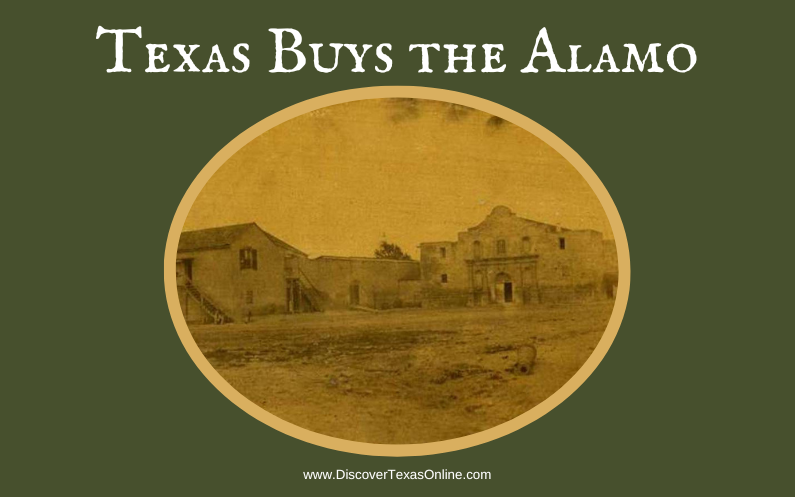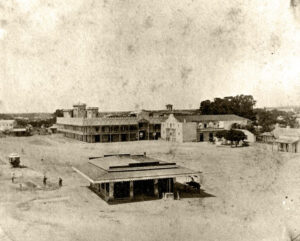
(Info courtesy of Copano Bay Press, one of my favorite resources for original source references. Please check them out!)
As you may know, the Alamo was constructed as a mission church–San Antonio de Valero–in 1744. I say “constructed”, but in truth the chapel was never fully completed. The compound was secularized (given over for non-church uses–as a military garrison, for example) around 1803, but the Catholic church retained ownership. On October 30, 1885, the State of Texas purchased the Alamo chapel from the Catholic Church. Most Texans at the time would have known the story of the siege and fall, but there was no real reason to have visited. There wasn’t much to see.
Here’s how the Galveston News reported the event:
San Antonio, Tex., October 30, 1885 – The State of Texas now owns the Alamo, for the purchase of which the Eighteenth legislature appropriated the sum of $20,000. I have here before said that it is a monument to heroism as well as of a civilization, but there is little now remaining to indicate its ancient origin or use, for it no longer resembles a mission, nor the ruins of a mission, but it has rather the appearance of a stone warehouse – the towers and stone roof are gone and a plain tin or iron roof now covers the Alamo.
The front and rear walls above the upper windows have been rebuilt with stone, in the style of modern architecture, and taken altogether, it has an unsightly appearance, for a building so renowned. It would therefore be inappropriate to speak of it as a monument of ancient civilization, since there is nothing save the columns, front windows, and it may be the contour of the wall itself, that would suggest such an origin or use to the mind of the visitor.
As the people are supposed to have purchased the Alamo through the aforesaid legislature, it will not be uninteresting to them to learn its present condition; and as thousands of people, whose money is invested in it, may not have seen it, a minute description will no doubt be acceptable to them…
He goes on to describe the physical features of the Alamo ruin in great detail, then says…
You pass around the walls which you see have been broken at the ends and a part of one side, and rebuilt with stone, half as thick as the original walls. You now descend to the first floor and enter a door in the north wing. Here the darkness is profound. Your guide lights a small lamp and you follow him through a narrow passage into the interior darkness.
You are informed that there are graves here, but you have not seen them – that heroes died here – and they may be there yet as far as you know. You feel oppressed and return by the narrow passage to the door by which you entered. You are now in the light – you have seen the Alamo. You pass out of the building disappointed, dissatisfied, disgusted. Did Texas heroes fall here? Can this be the monument purchased by the State to the memory of Bowie, of Crockett and of Travis?
You feel you have seen a warehouse instead of a monument. Indeed it was a warehouse from 1851 to the date of purchase by the State. The Eighteenth legislature called it a church, which is calculated to mislead the public mind. Did they not know the difference between a church and a warehouse? Once it was a church – later a warehouse.
Did they not think the people would like to see the property that had bought? If so, why did they not purchased the right of way around the Alamo?
After 130 years, this last oversight is being corrected. This month the General Land Office announced that it has three buildings (the Woolworth Building at 518 E. Houston St., The Palace Building at 319 Alamo Plaza, and the Crockett building at 321 Alamo Plaza) on the west side of Alamo Plaza under contract. Red McCombs, a board member of the Alamo Endowment, says the goal is “to be certain that we come the nearest that we possibly can to re-creating the Alamo as it was at the time that that took place.”
History is always being made, and everything old eventually becomes news! 🙂
Now, if you didn’t before, please pop over to the Copano Bay Press website. Read about the great work they do in bringing rare works of Texas History back to life, and seriously consider signing up for their FREE Texas Reader Newsletter. Their stories are always fascinating!



